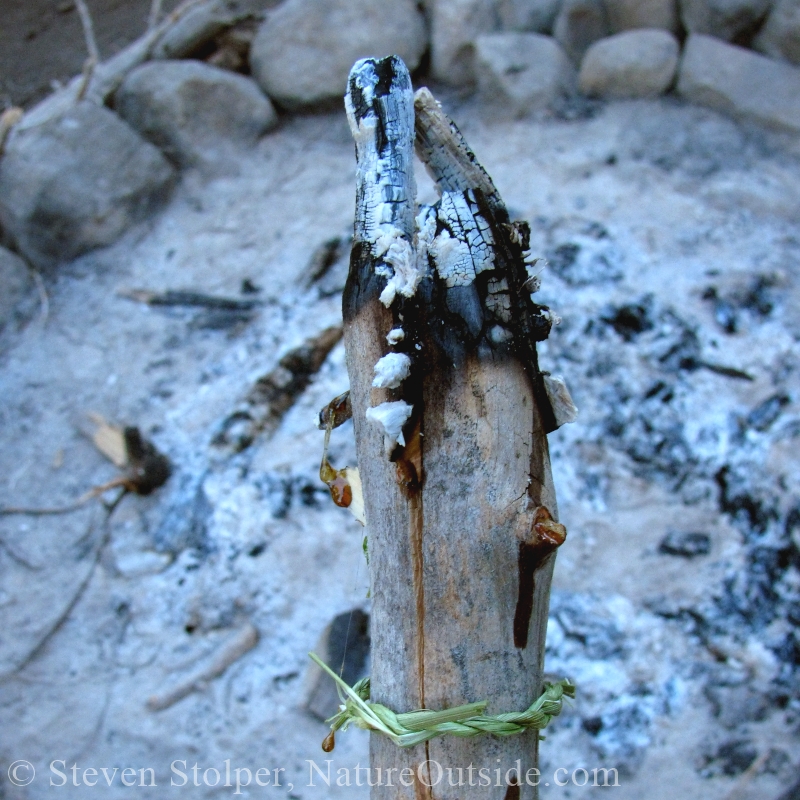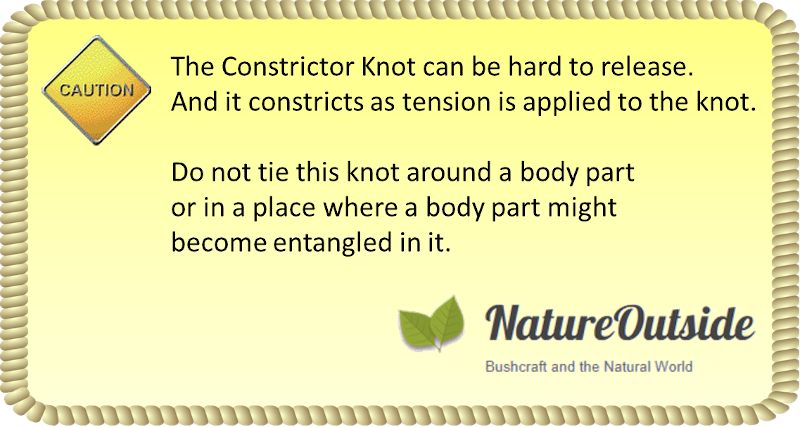
A constrictor knot (not shown) secured grass cordage around this torch to prevent the split from running.
When I talk about knots, I usually focus on my inability to tie them. But today, I want to share an important knot with you that is underused and underappreciated. It’s the Constrictor Knot.
Knot Technology – Yes it Is!
When I wrote about the world’s funniest knot, I point out that modern fasteners like nails, screws, and welds are recent inventions. The ancient world was literally tied together! And tying knots was a vital technology. Yes, technology!
Remember: A knot joins, fastens, or holds objects. You form a knot by interlacing flexible material such as cord, ribbon, or rope. The material is held in the knot only by friction! It’s pretty incredible when you think about it. The only thing holding a knot together is the friction of the knot itself!
Each type of knot has different properties. Some release easily. Some slide. Others hold when tension is absent.
Many knots are suited for specific purposes. And when you apply the right knot to solve the right problem, you are using “knot technology!”
The Constrictor Knot
The constrictor knot constricts (squeezes) as tension is applied to the knot. And it holds very well. In fact, it can be so hard to release that you may need to cut the knot to release it.
Such a knot has many uses. For example, I used it to stop a split from running when I made a torch from natural materials. You can use it like a modern zip-tie to hold parts of broken gear together. It can be used as a temporary whipping for the frayed ends of a rope. And you can use it as a clamp when you’re gluing wood together. You can even use it as an emergency hose clamp for your car!

The Constrictor Knot has a significant limitation. You can only tie it against a curved surface. If you try to tie it against a flat surface, it quickly unravels.
The Constrictor Knot can be very hard to release. And you may need to cut the knot to undo it. When you cut the cordage, cut the outer strand of of the knot. The inner strands will help protect the material you’re binding from the blade of your knife.
Let’s Tie the Knot
I want to share two videos with you that show how to tie a constrictor knot. Each teaches the same way to tie the knot. But the instructors present it differently. I often have trouble remembering how to tie this knot. And the first video triggered an “Aha!” moment that will help me remember how to tie the knot in the future.
The first video is by JungleCrafty. I greatly admire his videos about bushcraft skills used in tropical jungle. This is not his finest video, it’s actually about making a sheath for a parang (machete). I’m sharing it because he presents the Constrictor Knot in terms I haven’t heard before. He explains that the Constrictor Knot is actually a Clove Hitch with a little extra work. Many people know how to tie a Clove Hitch. So this explanation makes it easy to learn the Constrictor Knot. He also shows how to tie a “Double Constrictor Knot” that I find useful.
I’m not familiar with WhyKnot, who created this next video. But I want to present another way to learn the knot. Here’s a chance to see different approaches so that one of them may “click” with you. The right teaching approach greatly helps or hinders someone learning bushcraft skills. The right teaching approach is the one that best fits the way the student learns.
How do you use the Constrictor Knot? Leave a comment below to let me know.
Related Articles on NatureOutside
How to Make a Traditional Fish Hook (Video)
For fun facts and useful tips, join the free Bushcraft Newsletter.



Leave a Comment